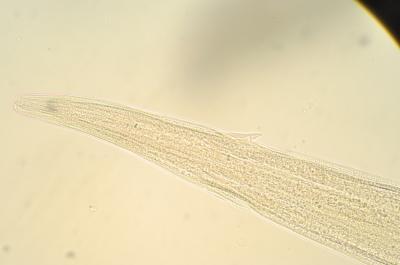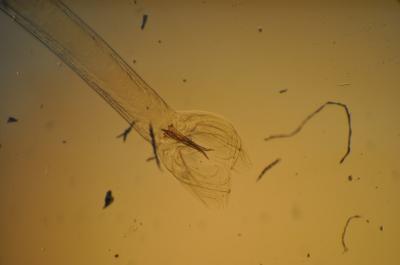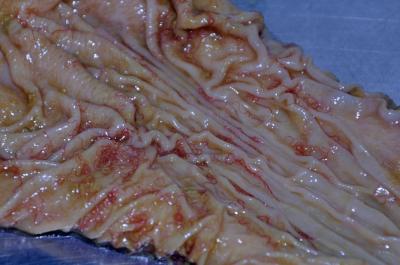Researchers have identified five enzymes that are essential to the survival of a parasitic worm that infects livestock worldwide and is a great threat to global food security. Two of these proteins are already being studied as potential drug targets against other pathogens.
The team sequenced the genome of Haemonchus contortus, or the barber pole worm, a well-studied parasitic worm that resides in the gut of sheep and other livestock globally. This genome could provide a comprehensive understanding of how treatments against parasitic worms work and point to further new treatments and vaccines.
The barber pole worm or H. contortus is part of a family of gastrointestinal worms that are endemic on 100% of farms and are estimated to cost the UK sheep industry alone more than £80 million pounds each year. H. contortus has become resistant to all major treatments against parasitic worms, so its genome is a good model to understand how drug resistance develops in this complex group of closely related parasites and will also reveal further potential drug and vaccine targets.
"Our reference genome allows researchers to understand how H. contortus and other worms of this type acquire resistance to a wide range of anthelmintics – the drugs used to treat worm infections," says Dr James Cotton, senior author from the Wellcome Trust Sanger Institute. "Seeing a common theme of drug resistance in this well-characterised worm is extremely important because both people and animals are reliant on so few treatments against parasitic worms."
The team sequenced the genome of a strain of H contortus that was susceptible to all major classes of drugs against parasitic worms. By comparing this sequence with that of worms that have acquired drug resistance, the researchers expect to reveal a wealth of information about how and why resistance has occurred.

This is the front of the Haemonchus contortus (Barber Pole) worm.
(Photo Credit: Moredun Research Institute)
"The H. contortus genome provides a rich and essential platform for future research in this and other types of parasitic worms," says Professor Neil Sargison, author from the University of Edinburgh, Royal (Dick) School of Veterinary Studies. "With the world population set to exceed nine billion by the year 2050, improving the security of our food supply is crucial. Getting to grips with genomes such as that of H. contortus, is our best option to tackle the issue of drug resistance and develop new drugs against parasitic worms to address this issue."
To generate a rich source of potential vaccine and drug target candidates, the team identified a set of genes that are more active in certain stages of the parasite life cycle and within the parasite's gut. They also identified five metabolic chokepoints – enzymes that are essential for a parasite's survival. Two of these enzymes are already being studies as potential drug targets; one against Mycobacterium tuberculosis and another against another type of worm.

This is the back of the Haemonchus contortus (Barber Pole) worm.
(Photo Credit: Moredun Research Institute)
To discover these targets, the team determined when and where each gene is turned on or off in the cells and tissues of H. contortus to reveal new insights into the worm's lifecycle. The result is the most extensive dataset of its kind for any gastrointestinal worm and is expected to provide a valuable resource for future investigations.
The researchers also described the full gene repertoires for known drug target families. This gives a comprehensive understanding of how several important treatments work against worms and begins to unravel why resistance has occurred in these genes.
"Not only is this worm closely related to many other parasites of livestock it is also similar to some species of worms in humans." Professor John Gilleard, joint senior author from the University of Calgary Faculty of Veterinary Medicine. "This makes it an extremely important model parasite species for experimental studies.
"Revealing new drug targets against H. contortus could provide much-needed new treatment opportunities against parasitic worms in both animals and humans."

These are Haemonchus contortus (Barber Pole) worms in situ in a sheep gut.
(Photo Credit: Moredun Research Institute)
Source: Wellcome Trust Sanger Institute